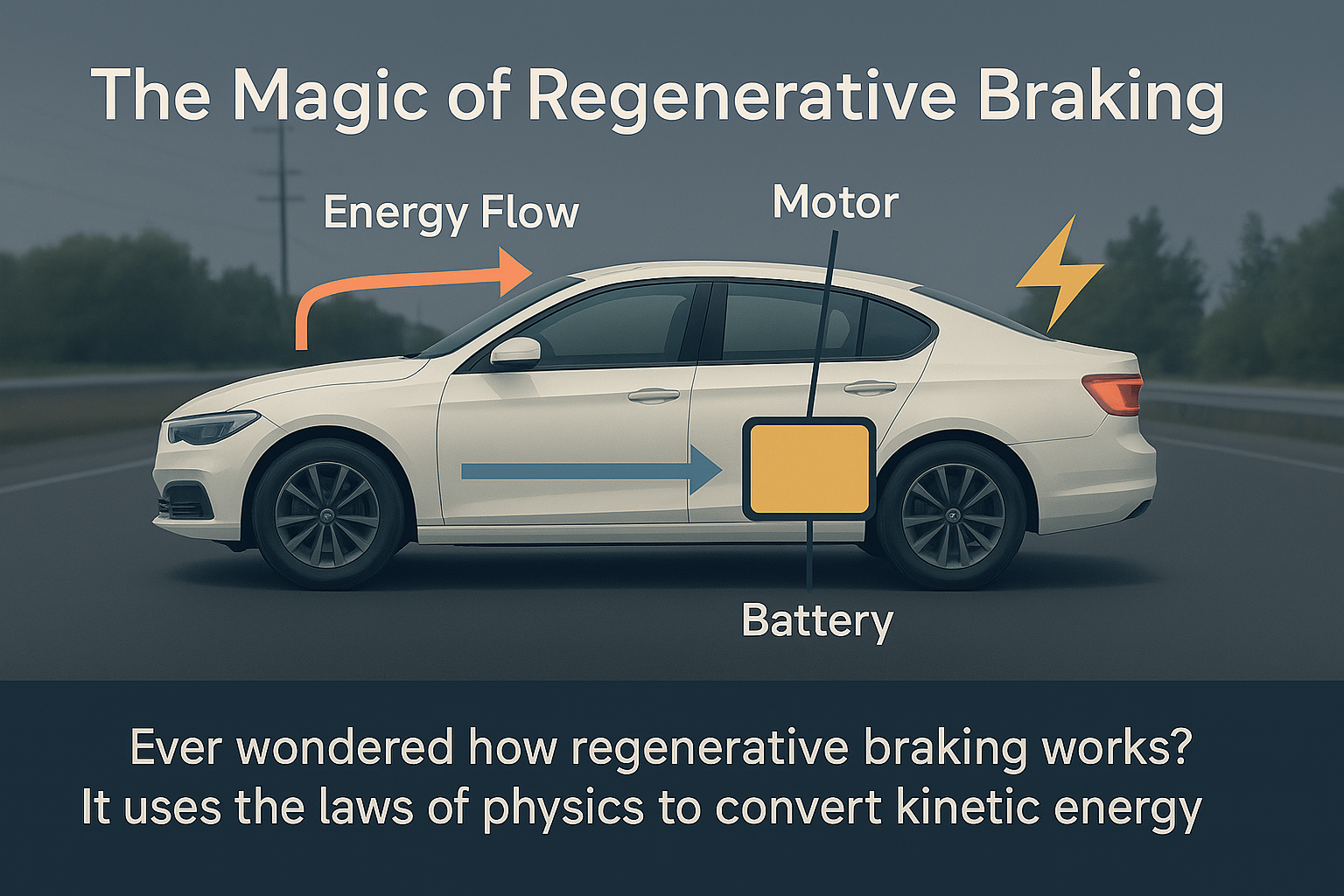Electric vehicles (EVs) are redefining what it means to drive smarter—not just in how they move forward, but in how they slow down. One of the most fascinating innovations under the hood? Regenerative braking—a feature that channels the laws of physics into battery power, giving your EV a unique edge in efficiency and sustainability.

What Is Regenerative Braking?
At its core, regenerative braking is about energy recovery. Traditionally, when a vehicle brakes, its kinetic energy—the energy of motion—is lost as heat through friction. Regenerative braking, however, flips the script. It captures this kinetic energy and transforms it into electricity that recharges the battery.
How Does It Work?
When you press the brake pedal in an EV or hybrid, the electric motor doesn’t just stop pushing the wheels—it starts running in reverse. In this reverse mode, the motor acts as a generator. It resists the motion of the vehicle, slowing it down, while simultaneously converting kinetic energy back into electrical energy. That energy is then routed back to the battery, ready to be used the next time you accelerate.
A well-designed diagram would show this beautifully: arrows indicating the energy flow from the wheels → motor → battery, with key components like the inverter and controller helping direct traffic along the way.
Why Does It Matter?
The Laws of Physics at Play
This process is a beautiful example of the conservation of energy, a principle of thermodynamics stating that energy cannot be destroyed—only converted. Regenerative braking is all about conversion, turning kinetic energy into usable electrical energy in real time.
Looking Ahead
As EV technology advances, regenerative systems are becoming more powerful, more seamless, and more responsive. From urban stop-and-go traffic to downhill coasts, every deceleration becomes an opportunity to recharge—literally and figuratively.
So the next time you gently press the brake, know that your car isn’t just stopping—it’s thinking, generating, and gearing up for the journey ahead.